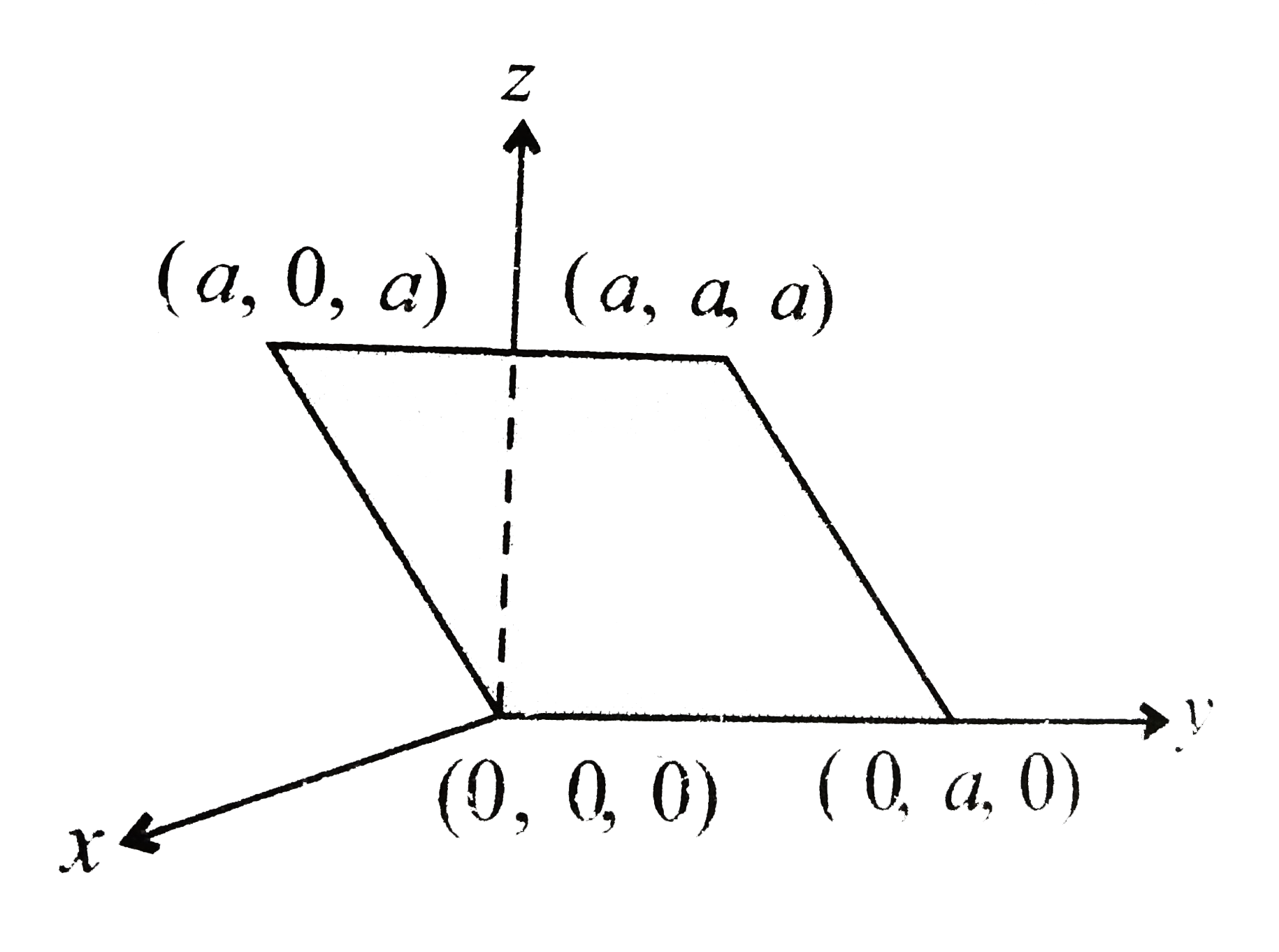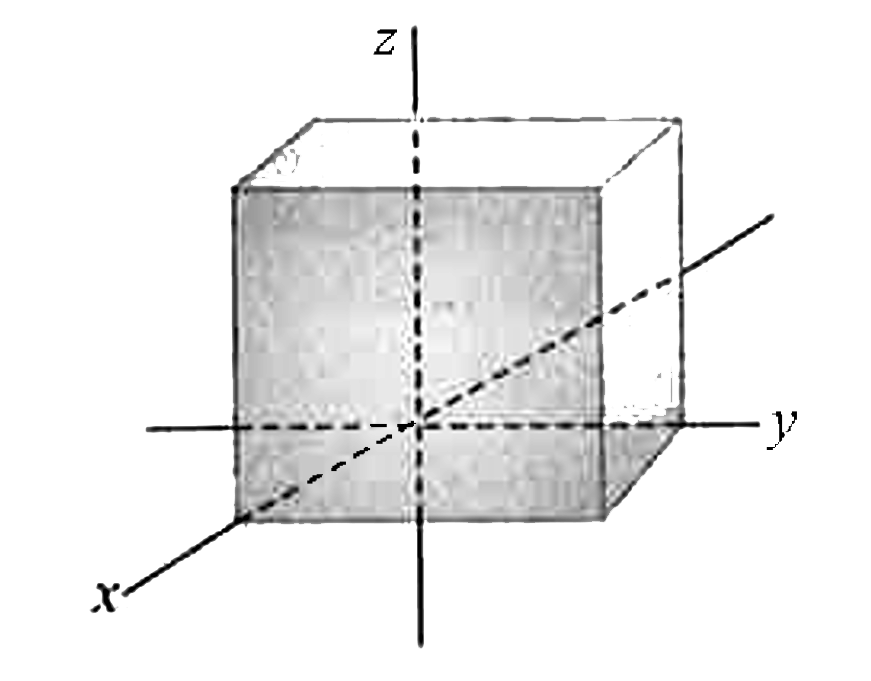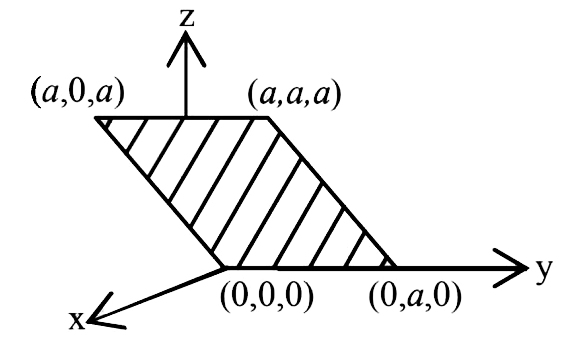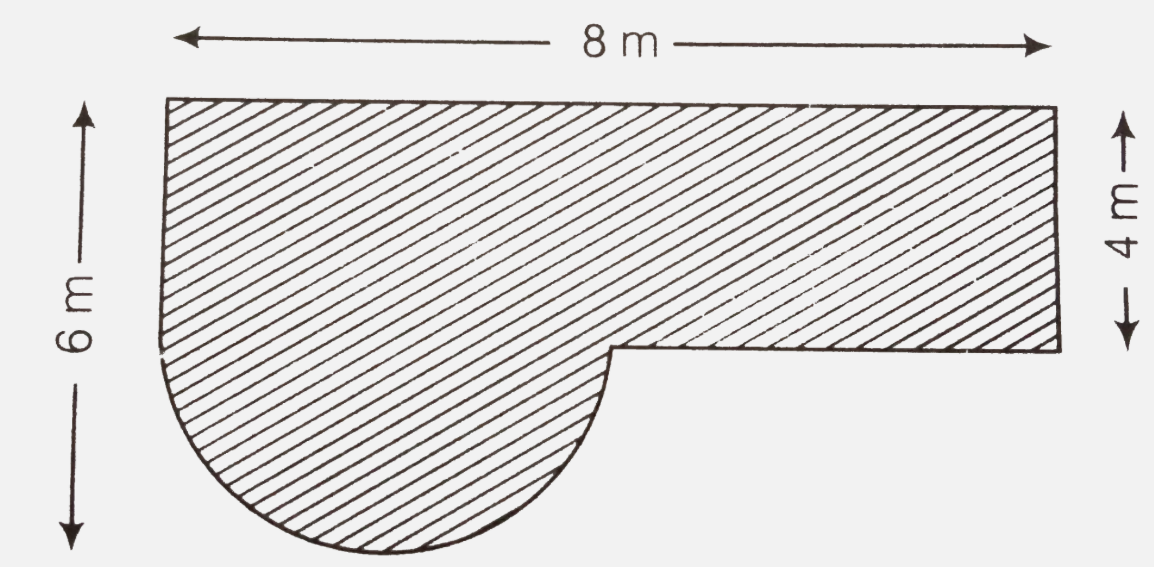Consider an electric field →E=E0ˆx, where E0 is a constant. The flux through the shaded area (as shown in the figure) due to this field is

2E0a2
√2E0a2
E0a2
E0a2√2
The correct Answer is:C
Electric flux ϕ=E.S or ϕ=EScosθ
Here θ is the angle between E and S .
In this equation θ=45∘, because S is perpendicluar ot surface .
E=E0 , S=(√2a)(a)=√2a2
∴ϕ=(E0)(√2a2)cos45∘=E0a2. Hence , option (C) is correct.
Topper's Solved these Questions
- BOOK - VMC MODULES ENGLISHCHAPTER - ELECTROSTATICSEXERCISE - JEE MAIN65videos
ELECTROSTATICS
- BOOK - VMC MODULES ENGLISHCHAPTER - ELECTROMAGNETIC INDUCTION & ALTERNATIVE CURRENT EXERCISE - IMPECCABLE52videos
ELECTROMAGNETIC INDUCTION & ALTERNATIVE CURRENT
- BOOK - VMC MODULES ENGLISHCHAPTER - ENERGY & MOMENTUMEXERCISE - JEE ADVANCE (ARCHIVE) - TRUE/FALSE TYPE1videos
ENERGY & MOMENTUM
Similar Questions
Knowledge Check
- Question 1 - Select One
Consider a uniform electric field in the ˆz direction. The potential is a constant.
Afor any x for a given zBfor any y for a given zCon the x-y plane for a given zDAll of these
Consider a uniform electric field in the ˆz direction. The potential is a constant.
View SolutionIf unifrom electric filed →E=E0ˆi+2E0ˆj, where E0 is a constant, exists in a region of space and at (0,0) the electric potential V is zero, then the potential at (x0,0) will be.
View SolutionThe flux of electric field through the circular region of radius r as shown in the figure is
_PHY_E05_291_Q01.png) View Solution
View SolutionIf uniform electric field →E=E0ˆi+2E0ˆj, where E0 is a constant exists in a region of space and at (0,0) the electric potential V is zero, then the potential at (x0,2x0) will be -
View SolutionFind the potential V of an electrostatic field →E=a(yˆi+xˆj), where a is a constant.
View SolutionAn electric field given →E=4.0ˆi−3.0(y2+2.0)j pierces a Gaussian cube of edge length 2.0 m and positioned as shown in the figure. (The magnitude E is in newtons per coulomb and the position z is in meters.) what is the electric flux through the (a) top face, (b) bottom face, (c) left face , (b) bottom facem (c) left face, and (d) back face ? (e) what is the net electric flux through the cube ?
 View Solution
View SolutionConsider a uniform electric field E=3×103ˆiN/C. (a) What is the flux of this field through a square of 10 cm on a side whose plane is parallel to the yz plane ? (b) What is the flux through the same square if the normal to its plane makes a 60∘ angle with the x-axis ?
View Solution



